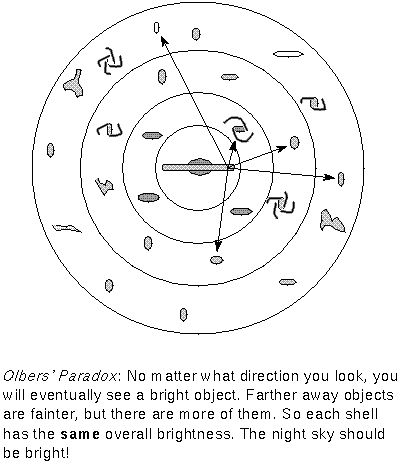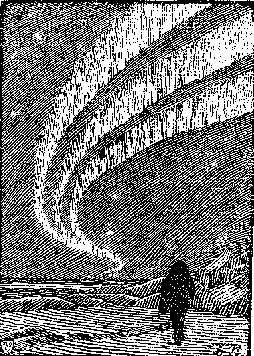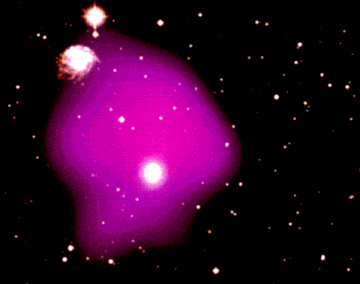For many years “Dance of the Spirits" has been mesmerizing millions of people. Yes, I am talking about the famous Aurora borealis, which is more frequently known as “Northern lights”. It is a very common phenomenon for Northern Hemisphere region as the chance of visibility increasing with proximity to the North Magnetic Pole, which is currently in the arctic islands of northern Canada.
But what exactly are northern lights? Or more precisely why does it occur?
Fusion reactions in the sun and the other solar lead to the production of charged particles (mostly electrons and sometimes protons). These charged particles usually have kinetic energy of the order of 100s of keV. This energy originates entirely from the fusion energy inside the sun and provides the particle with sufficient energy to overcome the magnetic field of the sun. When these particles come in vicinity of the earth, they become subjected to the earth’s magnetic field. The intrinsic magnetic field with the particles and the earth’s magnetic filed combine to produce an unbalance force on the particle, causing them to move from one pole to the other with high velocities. In the process they collide with atoms present in the earth’s atmosphere, raising them to higher energy levels. The high energy atoms in turn give out electromagnetic radiation in the visible range which is manifested in the form of the northern lights.

A magnificent view of the aurora
The aurora--a woodcut by Fridtjof Nansen
What does it look like? Most often, you see greenish white ribbons stretching across the sky, roughly from east to west, usually with waves in them. In Fairbanks they could be overhead, in northern Norway or Sweden too, sometimes even in Winnipeg. Further south those ribbons tend to be near the northern horizon. And if you look closely at them, you will note that they contain many parallel rays, running across their width (see picture beside).
Anyone who has ever used a compass knows that the Earth is a giant magnet. The needle of the compass usually points towards one of two points, the magnetic poles of the Earth, located near the geographic poles. But because the compass needle is mounted horizontally, it does not show everything. Actually, the magnetic force points not just northward but also slants down into the Earth. Compass needles carefully balanced on a horizontal axis ("dip needles") point in that slanting direction, when allowed to swing in a north-south vertical plane. In fact, the angle gets steeper the closer one gets to the magnetic pole. At the pole the force is vertical. The rays of the aurora faithfully follow that slanting direction.

What connects the pattern of the aurora to the region of the Earth's magnetic forces--the "magnetic field" of the Earth, as that region is known? For such a region, extending far into space, a convenient method is needed to describe it there. Such a method is provided by magnetic field lines, or as they were once called, "magnetic lines of force."
Chances are you have seen a drawing of the fieldlines of a bar magnet. They fan out from one pole, bend around in big curves, and then converge on the other pole. The magnetic pattern near Earth is like that, too--it is as if the Earth had a small (but oh so powerful!) bar magnet in its center: the lines fan out from the region near the south magnetic pole, reach their greatest distances above the equator, then converge again near the north magnetic pole.
To define field lines more exactly, imagine you had a compass needle hanging in space, able to tell us the exact direction of the magnetic force, in 3 dimensions. Such a needle will always point in the direction of the magnetic field line at its location. North of the equator such lines converge towards the region near the north magnetic pole, just like those of a bar magnet.

Back to the aurora. Between 1895 and 1907 the Norwegian physicist Kristian Birkeland tried to study its behavior in a lab. Inside a glass vacuum chamber he mounted a sphere with a magnet inside--he called it "terrella," Latin for "little Earth"-- and directed towards it a beam of electrons. To his surprise and gratification, the magnet steered the beam right to a patch around the magnetic poles of his small sphere, producing there, as it hit, a visible glow. He probably thought-- aha, so that is how it is done!
It turned out that negative electrons and positive ions alike are guided in space by magnetic field lines. They tend spiral around them, meanwhile sliding along them, like beads on a wire. Because Birkeland's field lines reached the terrella near its magnetic poles, that is where his electrons came down. Similarly magnetic field lines of the Earth guide electrons of the aurora to come down in the auroral zone. No wonder the rays of the aurora pointed along such lines! Each was produced by a ray of electrons, riding its own field line down to the atmosphere.
Understanding northern lights is a very small purchase, where the huge parlor of beauty and charisma is still to be discovered. Nature is still playing its own game of wonder. There is no ending of learning. Isn’t it? As the great man said “Learn to be unlearned” – Richard Feynman
----
By Mohammad Atif Bin Shafi
East West Univesity, Dhaka, Bangladesh.
----
The Aftermath Publications, Issue 4
----




















